While it may appear insignificant, the selection of baseboard styles can significantly transform the overall appearance of your room. These styles refer to the decorative trim that lines the meeting point between the floor and the wall.
When constructing or renovating a home, choosing the appropriate molding or trim is typically one of the final considerations. Nonetheless, it can be a somewhat perplexing task due to the multitude of options available and the varying styles required for different areas of the house.
The ideal baseboard for your space depends on several factors, including the architectural style of your house, the height of your ceilings, your preferred material, and your budgetary constraints.
Baseboard Styles and Profiles
Baseboards offer an extensive range of styles, including smooth, beaded, ornate, and numerous others. This wide variety of options ensures that you can find the perfect profile that perfectly complements the desired atmosphere of your home.
1. Flat Baseboard Molding
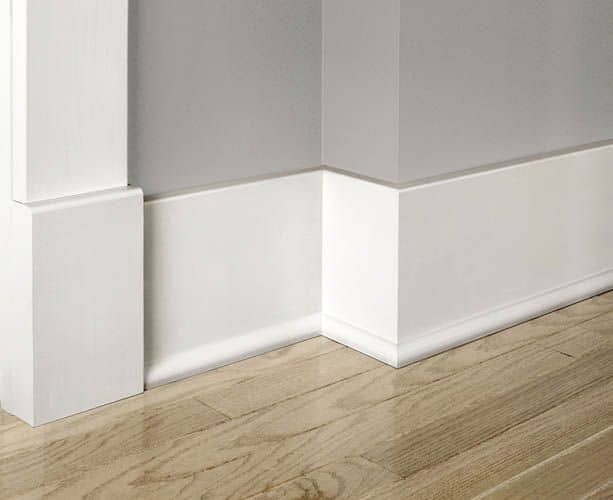
The plain baseboard style is a classic and straightforward option, ideal for those who prefer a minimalist aesthetic in their room. It complements various interior design styles seamlessly.
For interior applications, opting for Medium Density Fiberboard (MDF) as the baseboard material is cost-effective and allows for painting, although staining is not recommended.
However, if you intend to use the baseboard for exterior purposes, it is advisable to select more durable and moisture-resistant materials such as PVC, urethane, or wood for enhanced longevity and protection against the elements.
2. Flexible Baseboard Styles
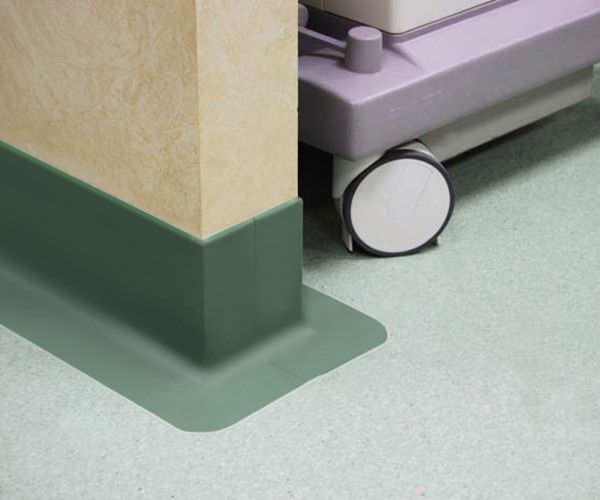
With a wide variety of profiles available, vinyl-coated baseboards are commonly used in both residential and commercial settings, such as houses and offices.
3. Jointed Baseboard Style
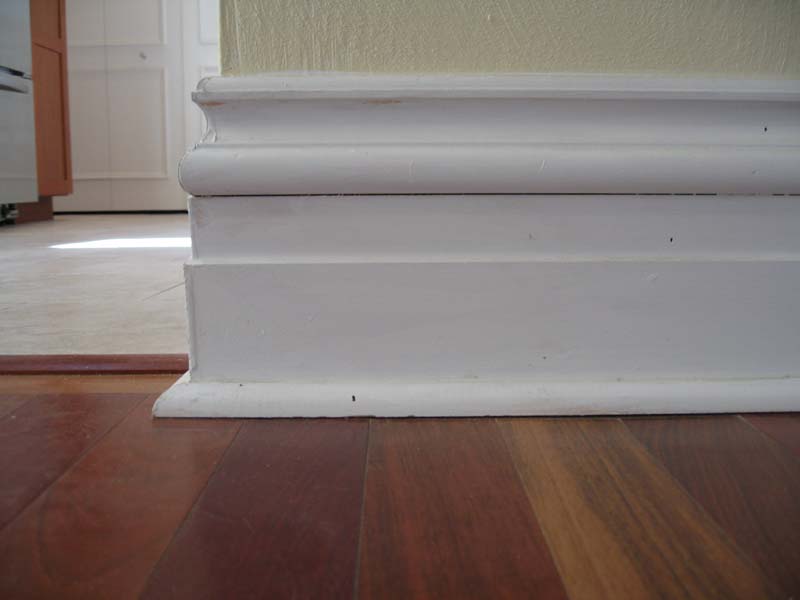
4. Carved Baseboard for Upgrade
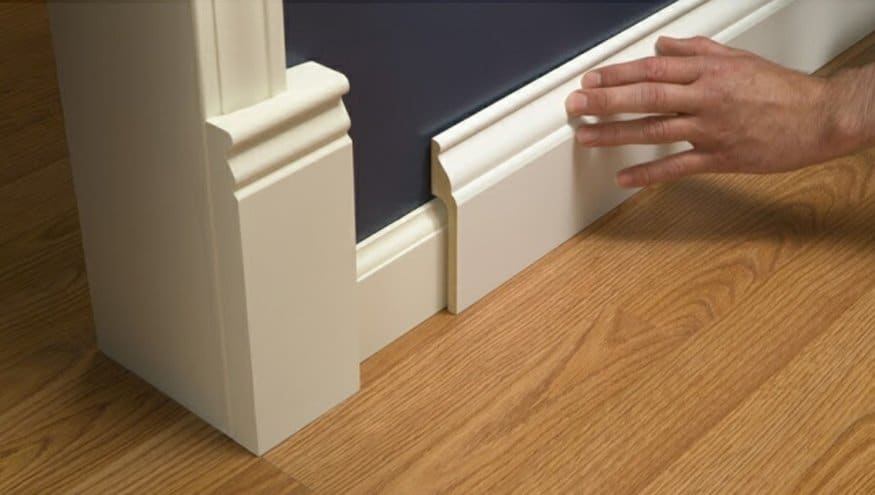
5. High Trim Profile
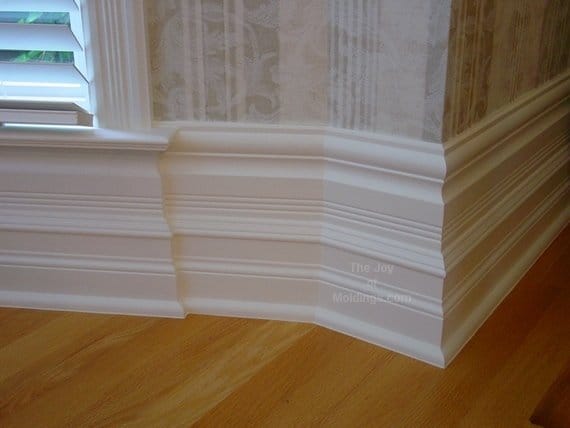
Baseboards are available in a vast array of profiles and shapes, offering numerous options for you to choose from in the market.
When you visit a local home improvement store, you’ll discover a diverse selection of trim profiles to suit your preferences. If you have a high ceiling, you can even customize the height of your baseboard to achieve the desired look.
For a comprehensive guide on selecting the appropriate baseboard size, please continue reading until the end of this article.
6. Clamshell Baseboard
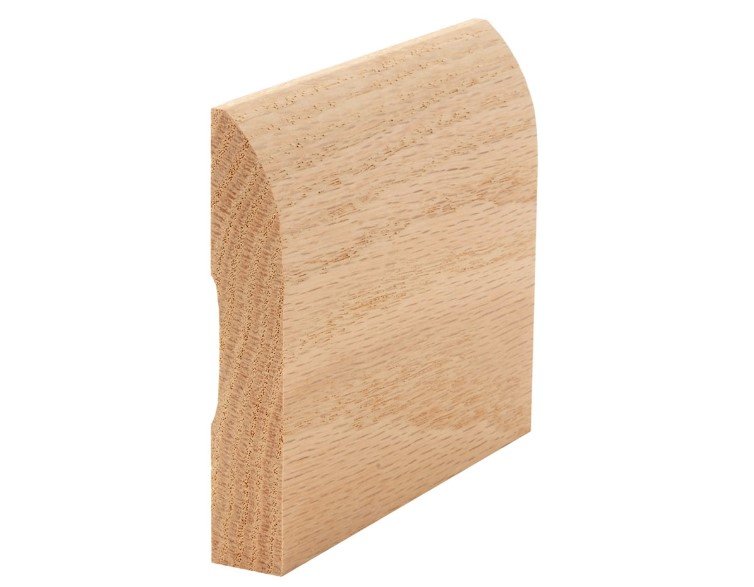
If you desire a baseboard that offers a single-piece design but deviates from the traditional look, the clamshell baseboard is a suitable choice.
Distinguished from the square-edged traditional style, the clamshell baseboard features a curved design at the top, adding a unique touch to your space.
7. Ornate Baseboard
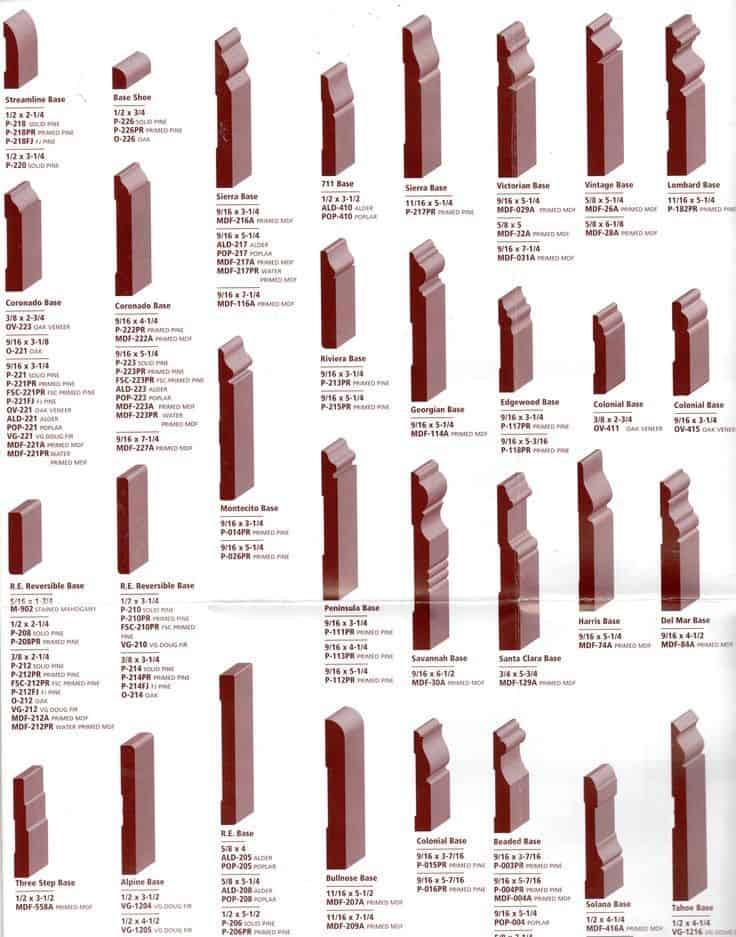
Baseboard Material
When considering your budget, it is crucial to take into account the style, material, and pricing of baseboards. There is a wide range of baseboard options available, each varying in shape, material composition, and cost.
Each material has its own advantages and disadvantages, and the ideal choice for you will depend on several factors and considerations specific to your house.
1. MDF Baseboard
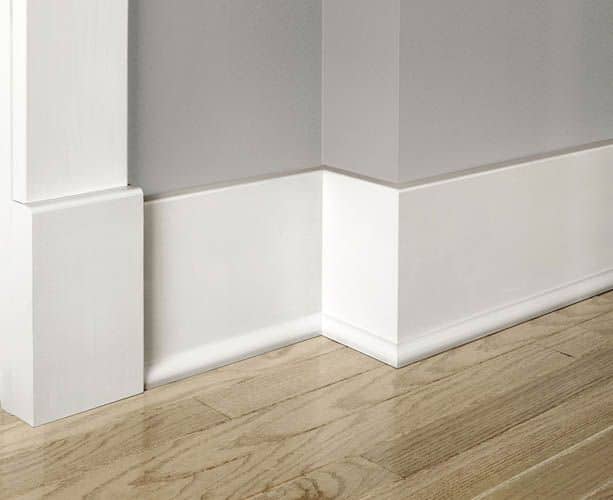
If you’re working within a budget and aiming for an appealing baseboard appearance, choosing MDF (Medium Density Fiberboard) baseboards would be a wise decision.
MDF baseboards are cost-effective, reasonably durable for interior applications, and can be easily painted. Additionally, they are available in a variety of styles and profiles to suit your preferences.
However, it’s important to note that MDF baseboards have some limitations. They are not as durable for exterior use, lacking moisture resistance, and cannot be stained like other materials.
2. Pinewood Baseboard
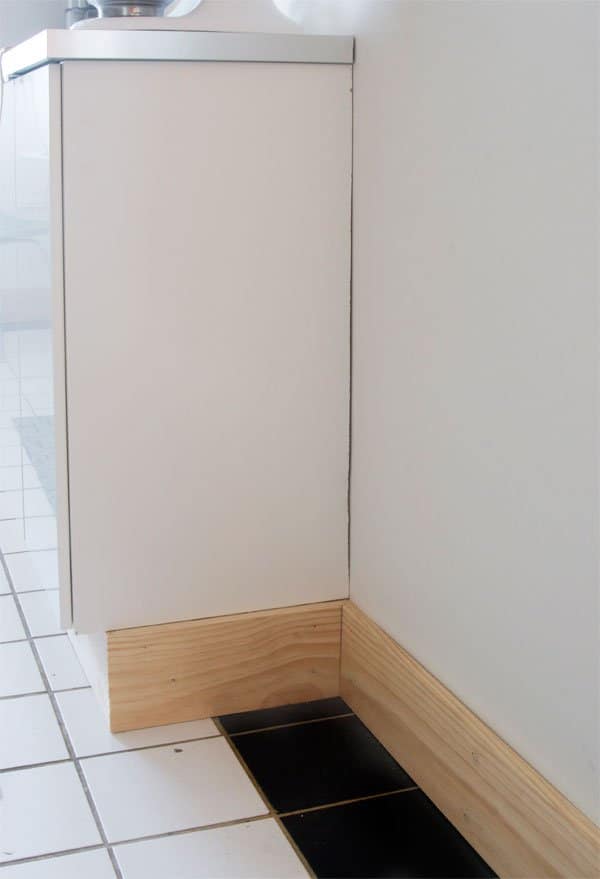
3. Oak Wood Baseboard
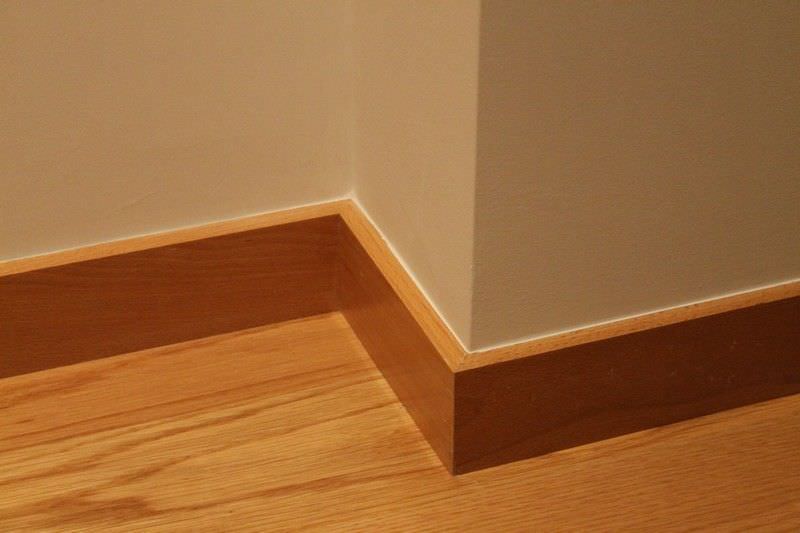
4. Vinyl / PVC / Urethane
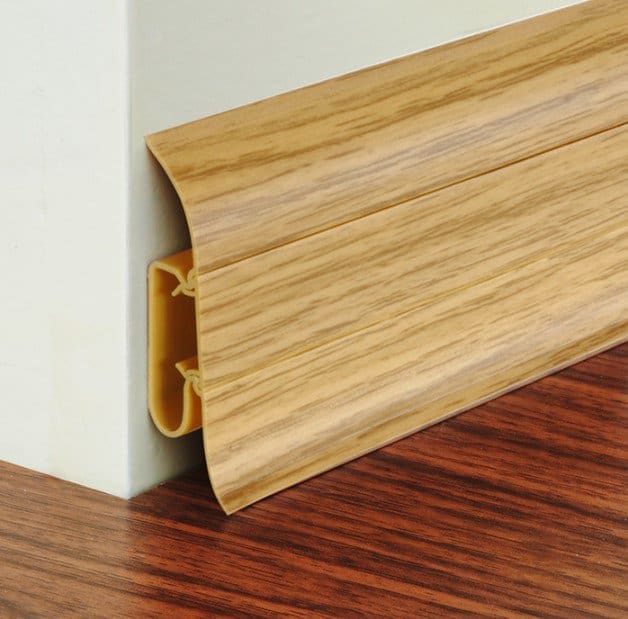
Why Use Baseboard?
Is it absolutely necessary to install baseboards in your house? Not necessarily.
However, opting to use baseboards as decorative elements for your home offers several advantages:
Benefits of Installing Baseboards:
- Enhances room character: Baseboards add visual appeal and contribute to the overall aesthetic of your space.
- Increases home value: The presence of well-installed baseboards can enhance the perceived value of your property.
- Complements other home features: Baseboards harmonize well with other architectural details like wainscoting and crown molding, creating a cohesive and polished look.
Ultimately, the decision to use baseboards or not depends on your personal preference and the desired style for your home.
How to Pick The Right Baseboard Size?
Baseboards are available in various sizes, and it’s important to select the right proportion that suits your room size, ceiling height, and overall aesthetic.
Here’s a straightforward guide to assist you:
- For an 8-foot ceiling, consider a baseboard height ranging from 3 to 5 inches.
- If you have a 9-foot ceiling, opt for a baseboard height between 4 and 6 inches.
- For a 10-foot ceiling, a baseboard height of 5 to 7 inches would be suitable.
- In the case of a 12-foot ceiling, aim for a baseboard height spanning 6 to 8 inches.
These recommendations can help ensure that your baseboards harmonize well with the proportions of your room and ceiling, resulting in a balanced and visually pleasing look.